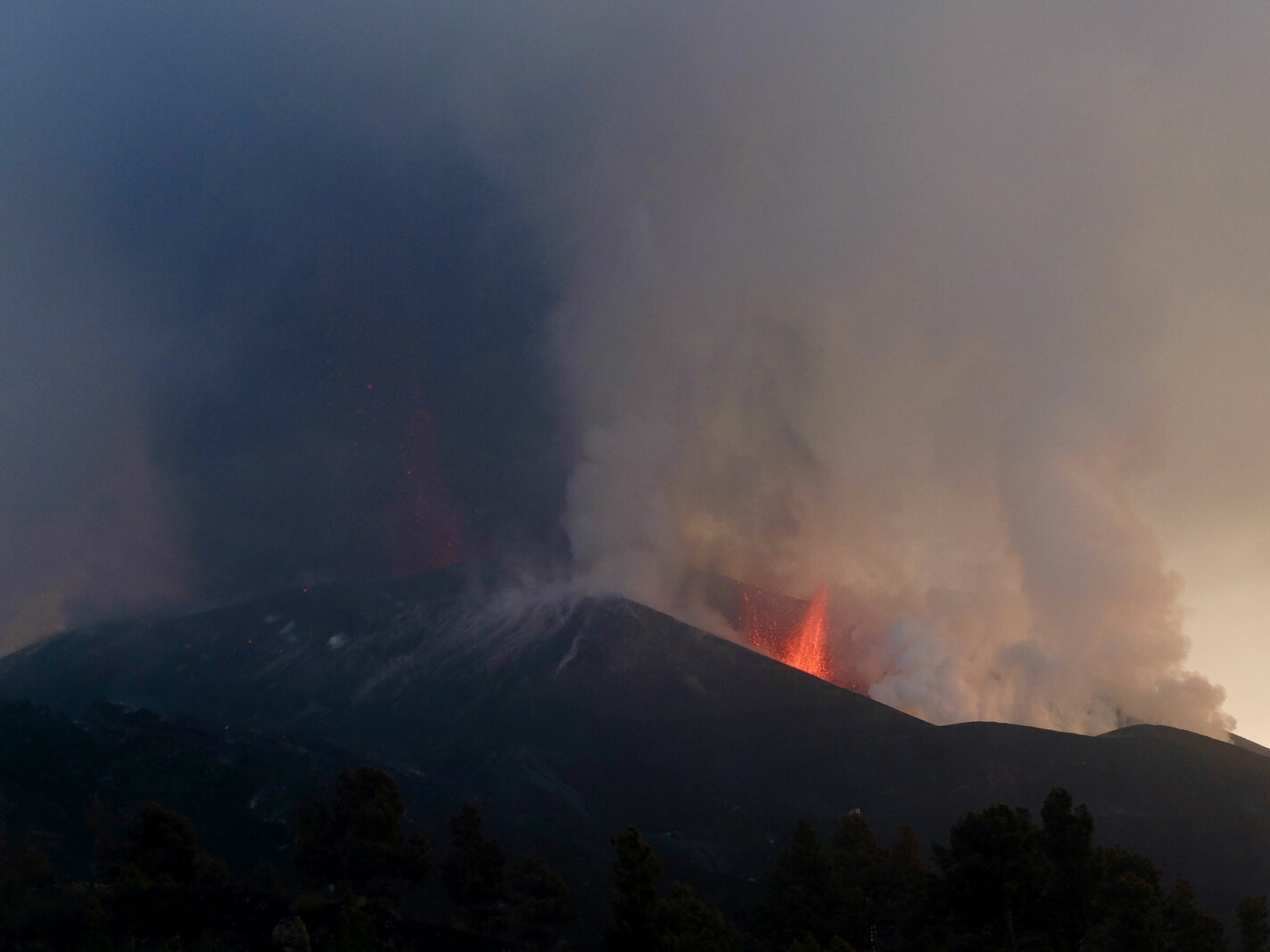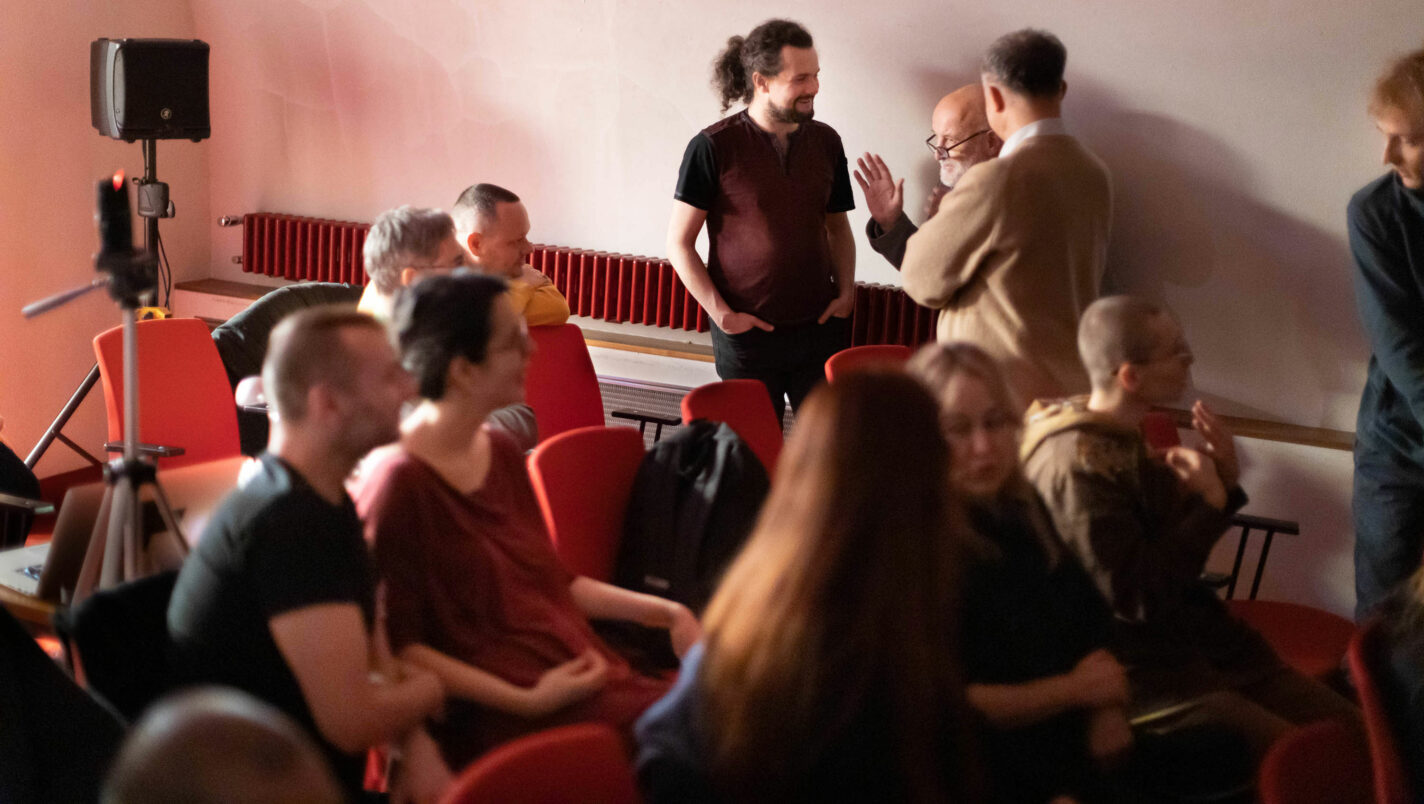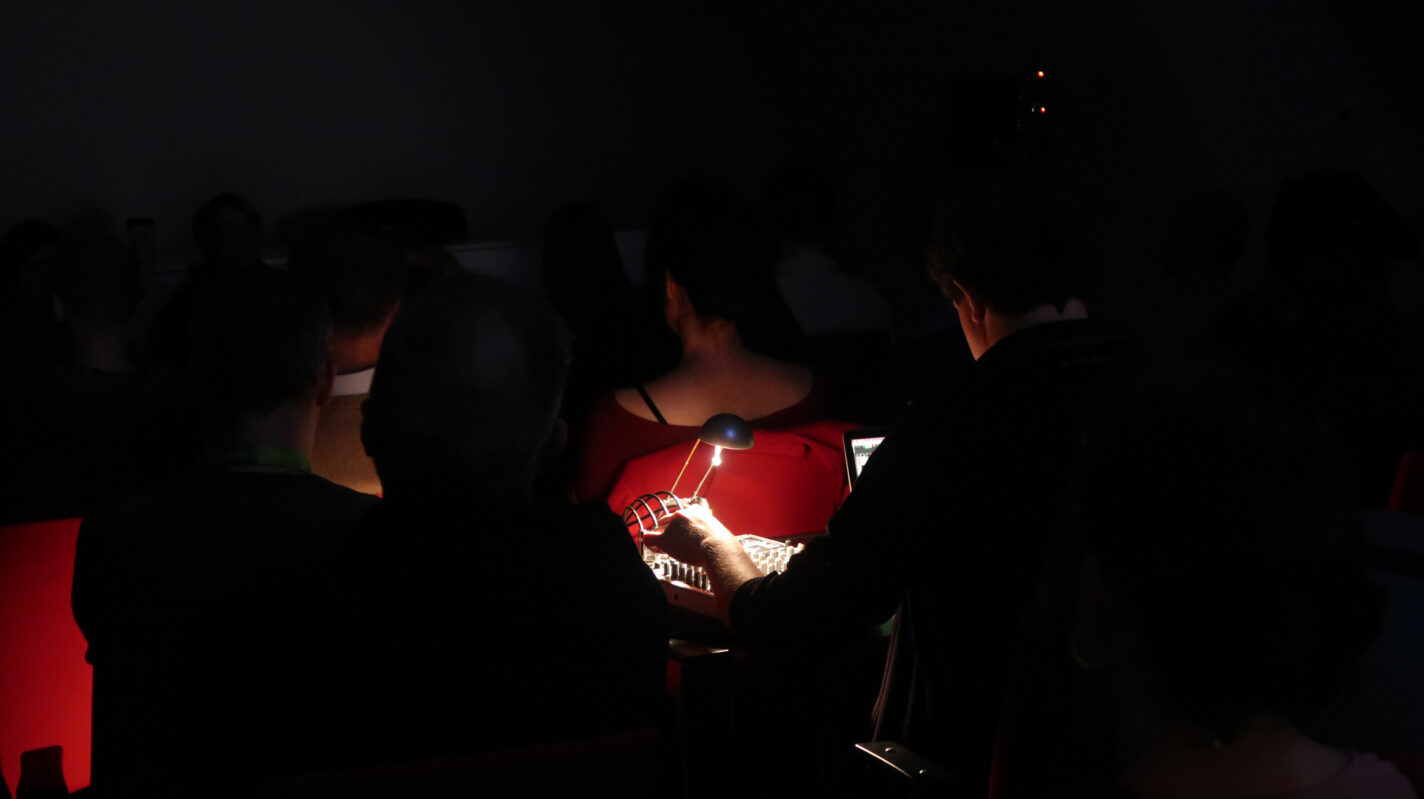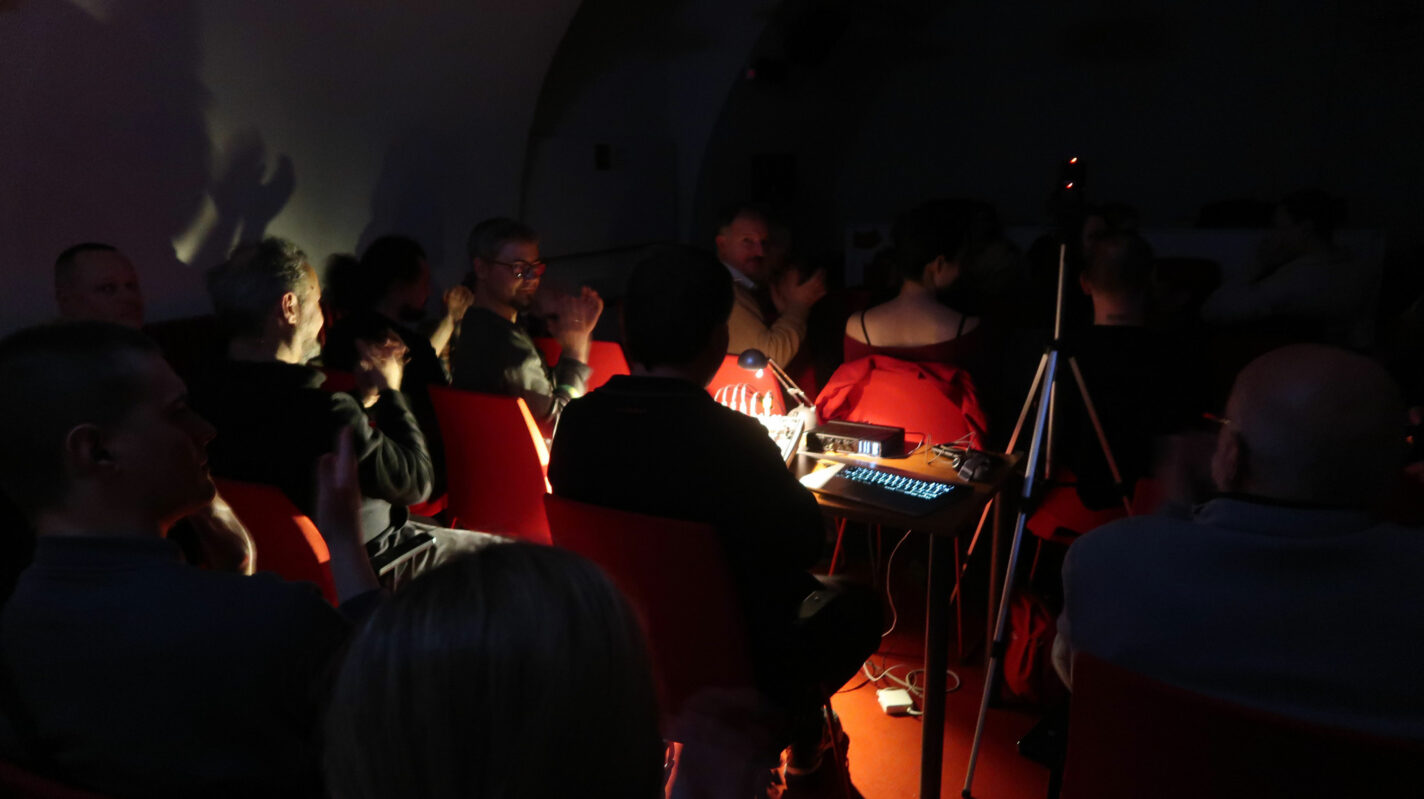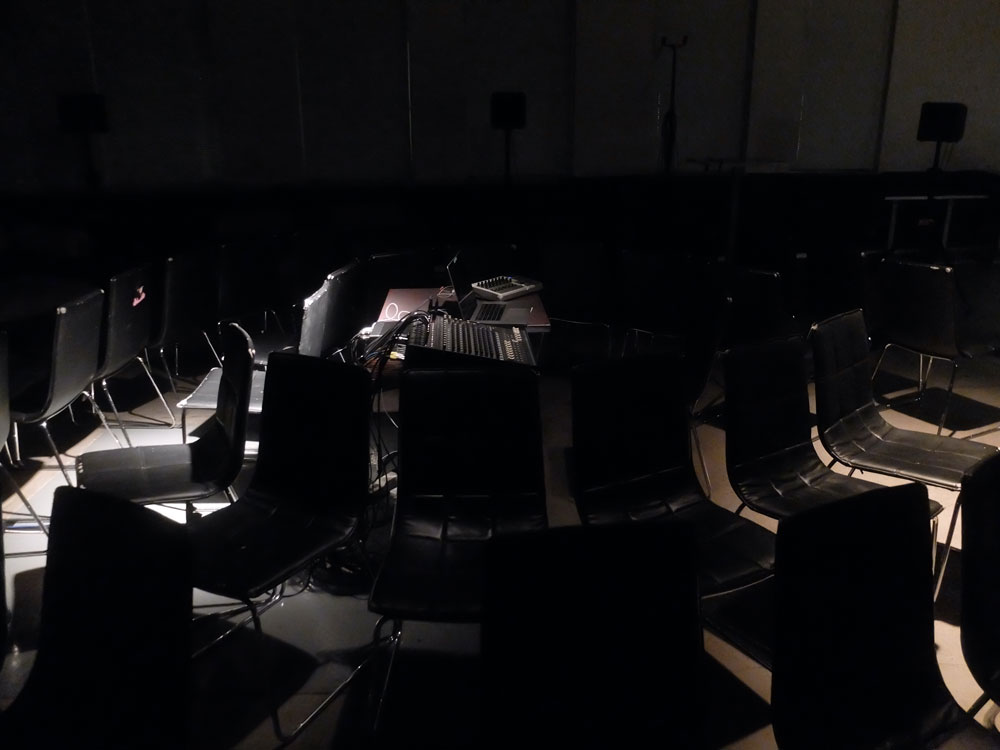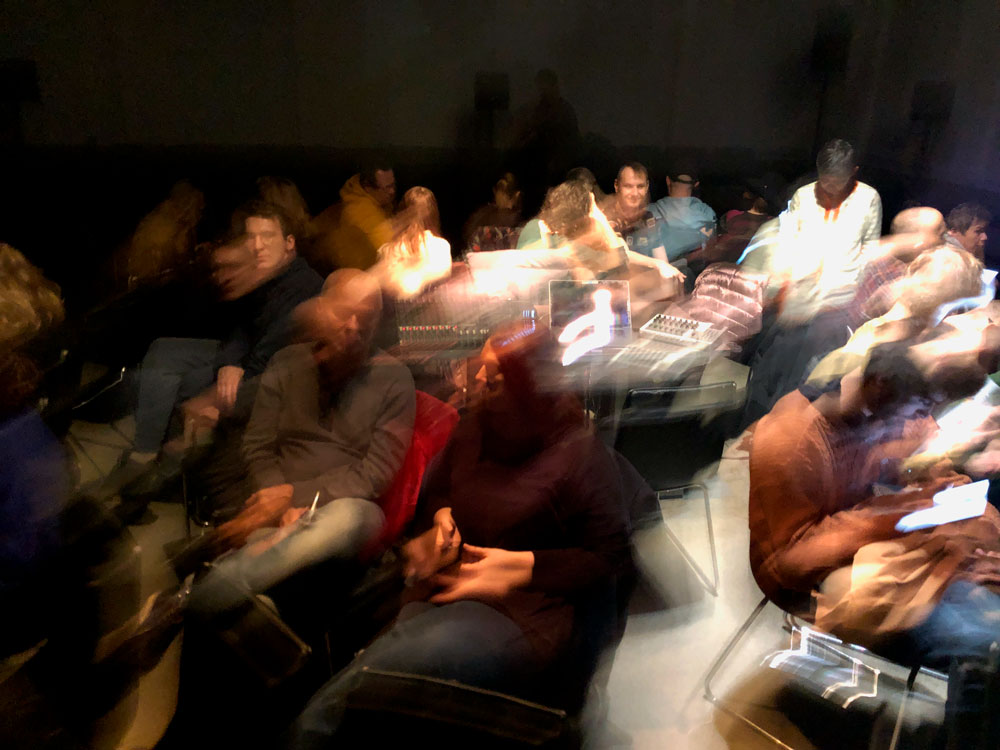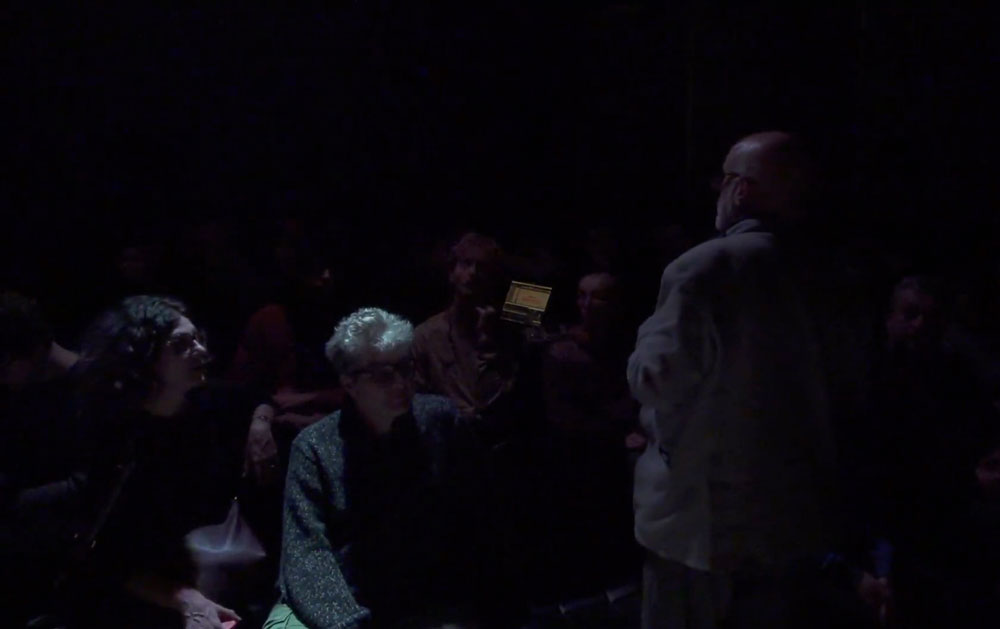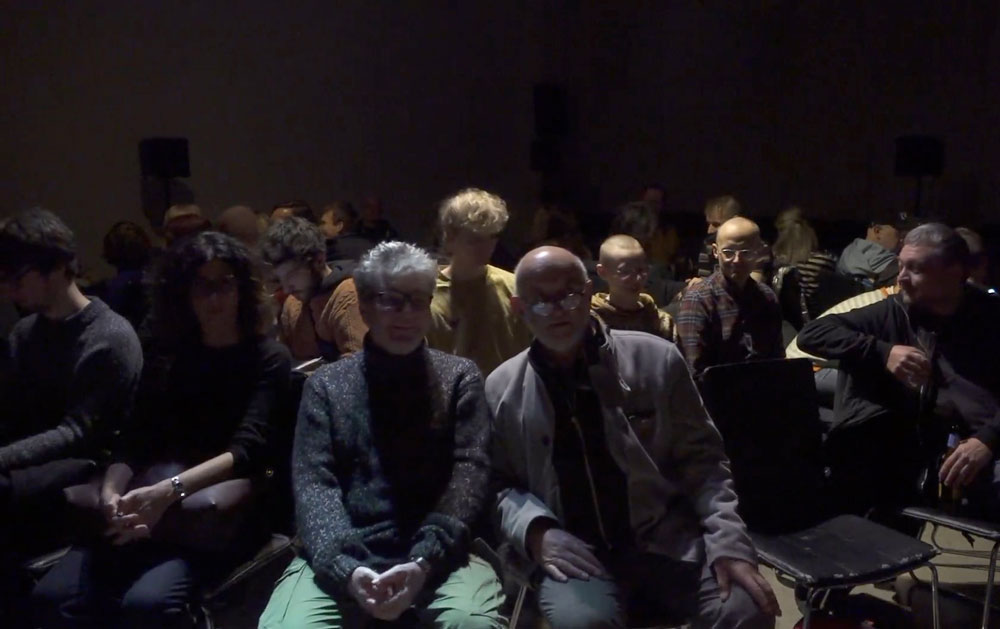Podczas ostatniej, jubileuszowej, 30 edycji fesiwalu Audio Art Festival gościliśmy w Krakowie Pablo Sanza – znanego artystę dźwiekowego z kręgu kultury iberyjskiej. Podczas festiwalu wykonał on dwa utwory: ENTANGLED w sali multimedialnej Hevre na krakowskim Kazimierzu oraz EARTHING w przestrzeni instytutu Cervantesa znajdującej się przy ul. Kanoniczej w Krakowie. Miałem przyjemność pomagać technicznie w przygotowaniach do tych wykonań, pojawiła się zatem okazja aby zadać Pablo kilka pytań na temat jego praktyki twórczej.
Twoje prace dźwiękowe powstają często z dźwięków rejestrowanych w wielu interesujących i niedostępnych dla przeciętnego człowieka miejscach. Przykładowo, podczas przygotowań do EARTHING spędziłeś tydzień na wyspie La Palma w pobliżu wulkanu podczas jego erupcji. Co jest Twoją największą motywacją do pracy artystycznej i na ile motywuje Cię właśnie podróżowanie?
Moją główną motywacją jest ciekawość słuchania i badanie słuchania jako sposobu na doświadczanie świata. Szczególnie interesuje mnie dostrojenie się do witalności pozaludzkiej, a także badanie progów i ograniczeń naszej percepcji. Fascynuje mnie plastyczność i wieloznaczność dźwięku jako zjawiska materialno-przestrzenno-percepcyjnego oraz afektywna siła słuchania.
Angażowanie się w możliwość pracy w terenie w różnych środowiskach i terytoriach dźwiękowych jest w mojej praktyce kluczowe. Podróżowanie i mieszkanie w różnych miejscach to stymulujący sposób na rewitalizację zmysłów i zmianę percepcji. Dzięki takiej praktyce stałem się na wpół koczownikiem i do pewnego stopnia geograficznie utraciłem korzenie.
Niektóre projekty skłaniają mnie do nawiązywania współpracy i znajdowania sposobów na spędzanie czasu w trudno dostępnych miejscach lub w określonych sytuacjach. Chodzi jednak głównie o eksplorację peryferii naszej nawykowej uwagi, skupienie się na tym, co zwykle niezauważalne i podsłuchane lub słuchanie poza naszym ludzkim zasięgiem słuchu oraz jego zwykłymi możliwościami. Zaskakujące dźwiękowe spotkania zdarzają się wszędzie. Prowadzę ponadto badania terenowe w miejscach uważanych za zwyczajne, a dla wielu ludzi może nawet nieistotne. To kwestia zaangażowania, stopnia uwagi i poświęcenia czasu.
Zarówno wspomniany projekt EARTHING jak i ENTANGLED odnoszą się do konkretnych miejsc będących otwartymi przestrzeniami, inne Twoje prace związane są ściśle z architekturą, jednak wszystkie lokalizacje cechują specyficzne warunki akustyczne. Jakie są Twoje priorytety podczas tworzenia prac audio site-specific? Czy podczas pracy eksperymentujesz czy masz swoje sprawdzone metody?
Moje prace dźwiękowe określone lokacją w przestrzeniach architektonicznych i publicznych powstają w odpowiedzi na specyficzne uwarunkowania tych miejsc. Interwencje te mają na celu intensyfikację doświadczenia tych miejsc i sytuacji, w których się znajdują, ożywiając percepcję.
Przez lata badałem różne strategie, takie jak dodawanie dźwiękowych uzupełnień, ujawnianie ukrytych i zwykle niezauważanych aspektów lub zajmowanie się przestrzenią jako systemem wibracyjnym, aby aktywować architekturę jako instrument. Takie projekty wymagają rozległej pracy na miejscu i często opracowywania konfiguracji ad-hoc obejmujących wielokanałowe systemy dźwiękowe złożone z niestandardowych głośników lub przetworników drgań, z niestandardowym oprogramowaniem itp. Interwencje site-specific, które zbudowałem, działają na różnych poziomach zmienności i zauważalności. Niektóre prace były anonimowe, subtelne i dyskretne, działały jako ukryte katalizatory percepcyjnych zmian, podczas gdy inne radykalnie zmieniały daną sytuację.
Doświadczalny wymiar miejsca jest zawsze głównym punktem wyjścia i skupienia. Procesem twórczym kierują fizyczne i przypadkowe cechy oraz uwarunkowania danego miejsca (tj. architektura, materiały, istniejące środowisko dźwiękowe, światło, pogoda, otaczająca je aktywność, historia, funkcja, wykorzystanie przestrzeni i rytmy społeczne). To „miejsce” interwencji jest również kształtowane przez kuratorskie, społeczne, instytucjonalne czynniki i relacje, które wpływają zarówno na proces, jak i doświadczenie uczestnika. Nawet jeśli przede wszystkim interweniuję dźwiękowo i skupiam się na słuchaniu, doświadczenie uczestnika jest głęboko ucieleśnione, wielozmysłowe i usytuowane. Takie określone lokacją prace są nierozerwalnie związane z ich położeniem.
Do każdego zaproszenia podchodzę ze „świeżą głową”, uważnie słuchając i przebywając tam jak najczęściej. Pozwalam projektowi rozwijać się na podstawie doświadczeń i uwarunkowań konkretnego kontekstu, nie narzucając z góry zaprojektowanej idei. Staram się wspierać proces intensywnego zaangażowania i badania warunków środowiskowych oraz okoliczności w danym miejscu, aby wytworzyć reakcję zdeterminowaną przez te elementy, które stają się „naturalnie” zintegrowane w takim miejscu.
Projekty, do których nawiązuję, oparte są na nagraniach terenowych. Czy poza techniką field recordingu wykorzystujesz jeszcze inne źródła dźwięku (np. instrumenty akustyczne lub elektroniczne) w swoich utworach? Czym się kierujesz w wyborze instrumentów?
Większość moich kompozycji powstała z nagrań dźwiękowych otoczenia utworzonych za pomocą różnych urządzeń, w tym mikrofonów, które rejestrują z powietrza (jak słyszy większość ludzi) oraz innych rodzajów czujników i przetworników. Na przykład intensywnie pracuję z hydrofonami (odsłuch pod wodą), akcelerometrami, geofonami i mikrofonami kontaktowymi (dla stałych wibracji i słuchania przez obiekty i struktury fizyczne). Badam również metody słuchania ultradźwięków (częstotliwości poza zasięgiem ludzkiego słuchu) i aktywności elektromagnetycznej (zarówno występującej naturalnie, jak i wytwarzanej przez technologię stworzoną przez człowieka).
Dla mnie nagrywanie jest aktem kreacji a nie procesem rejestrowania, dokumentowania czy prostego przedstawiania, jak to się zwykle rozumie. Co więcej, w trakcie mojego procesu komponowania opracowuję ten materiał dźwiękowy w studiu cyfrowym przy użyciu programów do edycji i przetwarzania oraz intensywnie pracuję ze strategiami dźwięku przestrzennego, aby powstał utwór na słuchawki lub wielokanałowy system dźwiękowy. Wykorzystywałem również formy syntezy cyfrowej w pracach site-specific, przede wszystkim jako energię akustyczną do „grania” architekturą jak instrumentem.
Urządzenia do słuchania, z którymi pracuję, to moje instrumenty muzyczne. Podobnie wszystkie byty wytwarzające dźwięk i mające na niego wpływ (tj. istoty inne niż ludzie, architektura, geologia, energia, pogoda), zaangażowane w tworzenie utworów, oraz ciała i aparaty percepcyjne słuchaczy-uczestników także można uznać za instrumenty.
Co ciekawe, ten rodzaj praktyki słuchania i komponowania może poszerzyć pojęcie tego, co uznajemy za instrument muzyczny. W ten sposób kwestionuję również granice między akustyką a elektroniką, naturą a sztucznością lub technologią, tym co ludzkie a tym co nie-ludzkie.
Jakbyś określił swoją twórczość w odniesieniu do takich nurtów w muzyce współczesnej jak muzyka konkretna, akusmatyczna, elektroakustyczna? Jakie są Twoje główne inspiracje muzyczne?
Na moje wykształcenie i praktykę nie wpływały określone dyscypliny, tradycje czy szkoły. Dlatego nigdy nie identyfikowałem swojej twórczości z określonymi kategoriami muzycznymi czy artystycznymi. Co więcej, zdarzały mi się nieprzyjemne incydenty i trudności w promowaniu mojej pracy ze względu na to, że niektórzy mają tendencję do trzymania się określonych pomysłów i oczekiwań dotyczących gatunków, kategorii i dyscyplin, z czym się nie zgadzam. Jednak zbliżanie się do szerokiej gamy muzyki (w tym trendów, o których wspomniałeś) i wielu form sztuki wpłynęło na mój rozwój jako artysty, być może w większym stopniu niż jakakolwiek formalna szkoła.
Prace, które tworzę, mają kruche istnienie w obrębie kulturowej ekologii. Fundamentalne znaczenie ma kontekst. Chociaż projekty działają w obszarach działalności określanych jako muzyka współczesna i sztuka współczesna, istnieje wiele trudności i pracy do wykonania (na poziomie instytucjonalnym, kuratorskim, akademickim, dziennikarskim i innych), aby rozszerzyć kategorie muzyki i tak zwanych sztuk wizualnych, aby naprawdę zrobić miejsce dla tych praktyk słuchania. Wysiłki zmierzające do wypromowania „sztuki dźwiękowej” (jako gatunku związanego z muzyką lub sztukami wizualnymi i performatywnymi, a czasem traktowanej jako odrębna dziedzina) stworzyły pewne możliwości i świadomość. Niemniej podział ten jest często szkodliwy w sposobie, w jaki dzieli i tworzy fałszywego „innego”, wykluczanego z dominujących dyscyplin, zamiast promować ciekawość, integrację i prawdziwą zmianę.
Gdy przygotowujesz salę koncertową do wykonania utworów zawierających wyłącznie warstwę dźwiękową, prosisz o maksymalne wyciemnienie wszystkich źródeł światła. Jak według Ciebie deprywacja zmysłu wzroku wpływa na percepcję dźwięku?
Kiedy prezentuję wydarzenie na żywo, proponuję inne wrażenia słuchowe niż zwykłe programy muzyczne. Podczas tych wciągających koncertów publiczność jest otoczona wielokanałowym systemem dźwiękowym dostosowanym do miejsca, w którym się odbywa. Nie ma sceny, a ja pracuję z widowni lub z tyłu, kontrolując dźwięk słyszany przez uczestników. Podczas imprezy staram się jak najbardziej zaciemnić miejsce. Słuchanie w ciemności pozwala mózgowi poświęcić mniej zasobów poznawczych na bodźce inne niż słuchowe, poprawiając wydajność słuchową uczestników i utrzymując uwagę. Pomaga zminimalizować zakłócenia wizualne, sprzyja intymności i sugeruje sytuację alternatywną dla standardowej prezentacji muzycznej opartej na scenie teatralnej skierowanej do przodu.
Doświadczenie muzyczne nigdy nie było wyłącznie słuchowe i zwykle zawiera elementy wizualne oraz teatralne charakterystyczne dla różnych kontekstów kulturowych, gatunków itp. Wpływ tradycyjnych aranżacji i nawyków jest duży, a ja wobec tego muszę przewidzieć zmianę konfiguracji miejsca by stworzyć odpowiednie warunki. Nawet na scenach muzyki elektronicznej wielu odczuwało niepokój z powodu braku elementów wizualnych i performatywnych gestów nieodłącznie związanych z tym medium. Artyści i organizatorzy starają się wypełnić to, co uważają za lukę, pokazami świetlnymi, projekcjami, gadżetami, kostiumami itp., traktując to jako sposób na zapewnienie rozrywki dla publiczności. Idę w innym kierunku. W miejscu wykonania utworu nie ma żadnych działań wizualnych do oglądania, natomiast wiele można doświadczyć i przeżyć wewnętrznie. Wykonawcami są słuchacze-uczestnicy. Dlatego staram się kultywować szczere, bezpośrednie zaproszenie do słuchania i tworzyć wygodną przestrzeń do zaangażowania się w praktykę zbiorowej intymności, odkrywczego słuchania i przyjemności. Brak świateł podczas występu również pomaga zaoszczędzić kilka kilowatów.
W tekście towarzyszącym utworowi Entangled napisałeś, że słuchanie jest aktem twórczym. Powołałeś się także na stanowisko Tima Ingolda, że dźwięk nie jest przedmiotem naszej percepcji lecz jego medium. Czy możesz rozwinąć tę myśl?
Uświadomienie sobie, jak ważne jest słuchanie i enaktywna natura naszej percepcji, było dla mnie kluczowe. Jako słuchacze zawsze odgrywamy aktywną rolę, a nasz akt słuchania staje się performatywny. Moje prace i sytuacje słuchowe, które organizuję, mają na celu podkreślenie i kultywowanie tych cech w wyraźny i subtelny sposób.
Tim Ingold napisał tekst zatytułowany „Four Objections to the Concept of Soundscape”, który znalazł się w jego książce „Being Alive: Essays on Movement, Knowledge and Description”, wydanej wcześniej pod bardziej prowokacyjnym nagłówkiem „Against Soundscape”. Koncepcja pejzażu dźwiękowego została wprowadzona przez nieżyjącego już kanadyjskiego kompozytora R. Murraya Schafera w latach 60. XX wieku i została powszechnie przyjęta bezkrytycznie. Pomogła ona zwrócić uwagę na proces słuchania i dźwięk jako zaniedbywane wymiary. Jednak tradycyjne idee Schafera dotyczące ekologii akustycznej zawierają intensywny moralizm estetyczny i wady, które można kwestionować i przemyśleć.
Ingold ubolewa nad uprzedmiotowieniem dźwięku, jakie powoduje pojęcie pejzażu dźwiękowego i potępia solidność i stałość, jakie implikuje. Sugeruje porównywanie dźwięku ze światłem, a nie obrazami. Jesteśmy skąpani w dźwięku i świetle niczym w płynących oparach medium, poprzez które poruszamy się i istniejemy. Charakteryzuje je jako „strumienie medium” i cytuje „pogodę” jako przyziemne określenie dla swojego pojęcia. Jest to przemyślana relacja, która postrzega dźwięk jako zasadniczo empiryczny, przyczyniając się do budowania alternatywnych ram dla dominujących dyskursów.
Słuchając Twoich utworów, które przenoszą nas na chwilę w sam środek dżungli czy do wnętrza wulkanu miałem silne poczucie jedności z planetą, na której żyjemy. Z jakimi reakcjami i odczuciami spotykasz się najczęściej u odbiorców?
Uwielbiam otwartość, na jaką pozwala ten rodzaj utworu, swoim skupieniem na ucieleśnionym doświadczeniu zmysłowym. Wymaga (i nagradza) aktywne zaangażowanie, ponieważ nie ma scenariusza, werbalnej opowieści ani obrazów, których można by się trzymać. Czasami ludzie próbują odgadnąć określone źródła dźwięku, jednak naprawdę doceniam, gdy ludzie mówią mi, że przyjęli otwartość tych spotkań, nie próbując rozszyfrować żadnej konkretnej struktury, znanego języka ani przesłania, które się za tym kryje. Niektórzy mówią o pojawieniu się narracji, jakiejś opowieści dźwiękowej, obrazów wizualnych lub po prostu opisują emocje, poczucie zachwytu, oczarowania i zaskoczenia. Zwykle występuje poczucie współistnienia swojskości i obcości oraz oscylacja skupienia pomiędzy dźwiękami jako bytami zewnętrznymi lub zdarzeniami a wewnętrznymi uczuciami powstającymi w naszych ciałach. Poza tym często słyszę takie emocje jak Twoje, związane ze świadomością ekologiczną, empatią i zestrojeniem się ze światem innym niż ludzki.
Twoja twórczość jest programowo zaangażowana politycznie w problematykę ekologii. Czy uważasz, że muzyka może pomóc zminimalizować zagrożenie katastrofą ekologiczną Ziemi? Jeżeli tak, to w jaki sposób?
Cóż za istotne pytanie. Udzielenie pozytywnej odpowiedzi może wydawać się idiotyczne lub niewiarygodnie naiwne, biorąc pod uwagę wymiar przeplatających się kryzysów ekospołecznych, zwłaszcza w świecie, w którym termin sztuka stał się symbolem rynku i towarów, rozrywki, spektaklu, a ostatnio także „treści”.
Wierzę, że dzieła sztuki mogą być katalizatorami zmian w postrzeganiu, funkcjonować jako narzędzia transformacyjne i działać jako czynniki zmian społecznych i kulturowych oraz osobistych dociekań.
Dzieła sztuki skupiające się na dźwiękach otoczenia i dostrojeniu do światów i rzeczywistości innych niż ludzkie mogą zachęcać do świadomości ekologicznej i kultywować mniej antropocentryczne sposoby bycia i myślenia. Nie chodzi tylko o treść czy tematykę prac, ale o rozumienie doświadczenia artystycznego jako aktu etyczno-politycznego, wskazującego na formy świadomości, edukacji i przyjemności.
Co więcej, tego rodzaju praktyka słuchania zachęca słuchaczy-uczestników do ponownego rozważenia i restrukturyzacji swoich nawyków i oczekiwań. Ma potencjał do przedstawienia alternatyw dla dominujących kontekstów kulturowych muzyki, sztuki i współczesnych społeczeństw. Może nam pomóc przemyśleć na nowo pojęcia autorstwa, produkcji i uczestnictwa w sztuce i poza nią.
Jednak nie możemy uważać tych emancypacyjnych lub uzdrawiających potencjałów za coś oczywistego. Istnienie na marginesie daje zarówno perspektywy, jak i kruchość, podatność na logikę kapitalizmu, szerzący się greenwashing, którego celem jest dokooptowanie wszystkich form ekologicznej ekspresji itp. Utwory potrzebują wspierających kontekstów oraz odpowiednich działań instytucjonalnych i kuratorskich oraz dyskursu by istnieć i działać skutecznie.
Serdecznie dziękuję za rozmowę i inspirujące odpowiedzi. Życzę powodzenia w przyszłych działaniach i mam nadzieję, że będzie jeszcze nie raz okazja aby się spotkać na wspólnym przeżywaniu Twoich utworów.
(Piotr Madej)
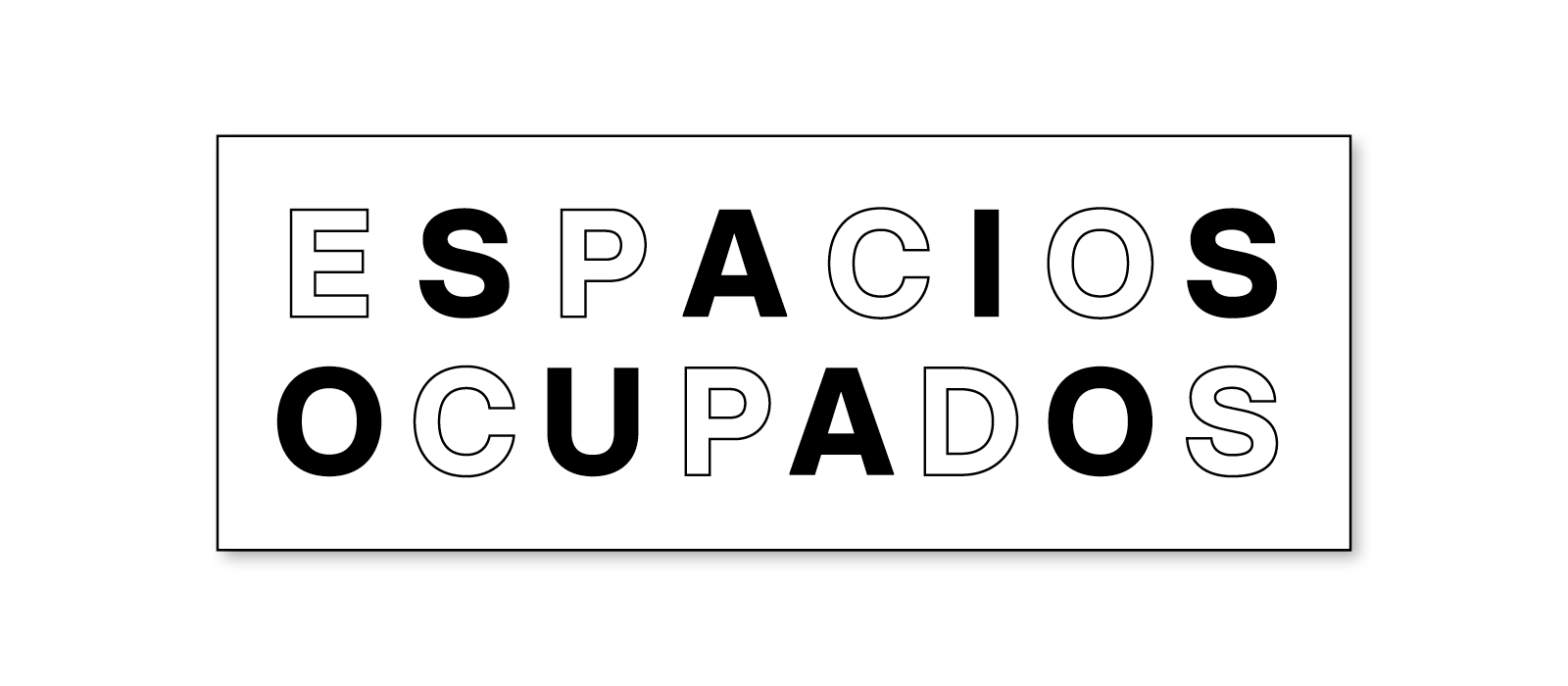

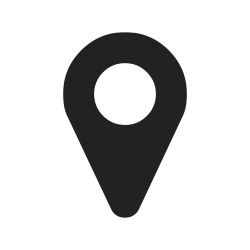 Cracovia
Cracovia